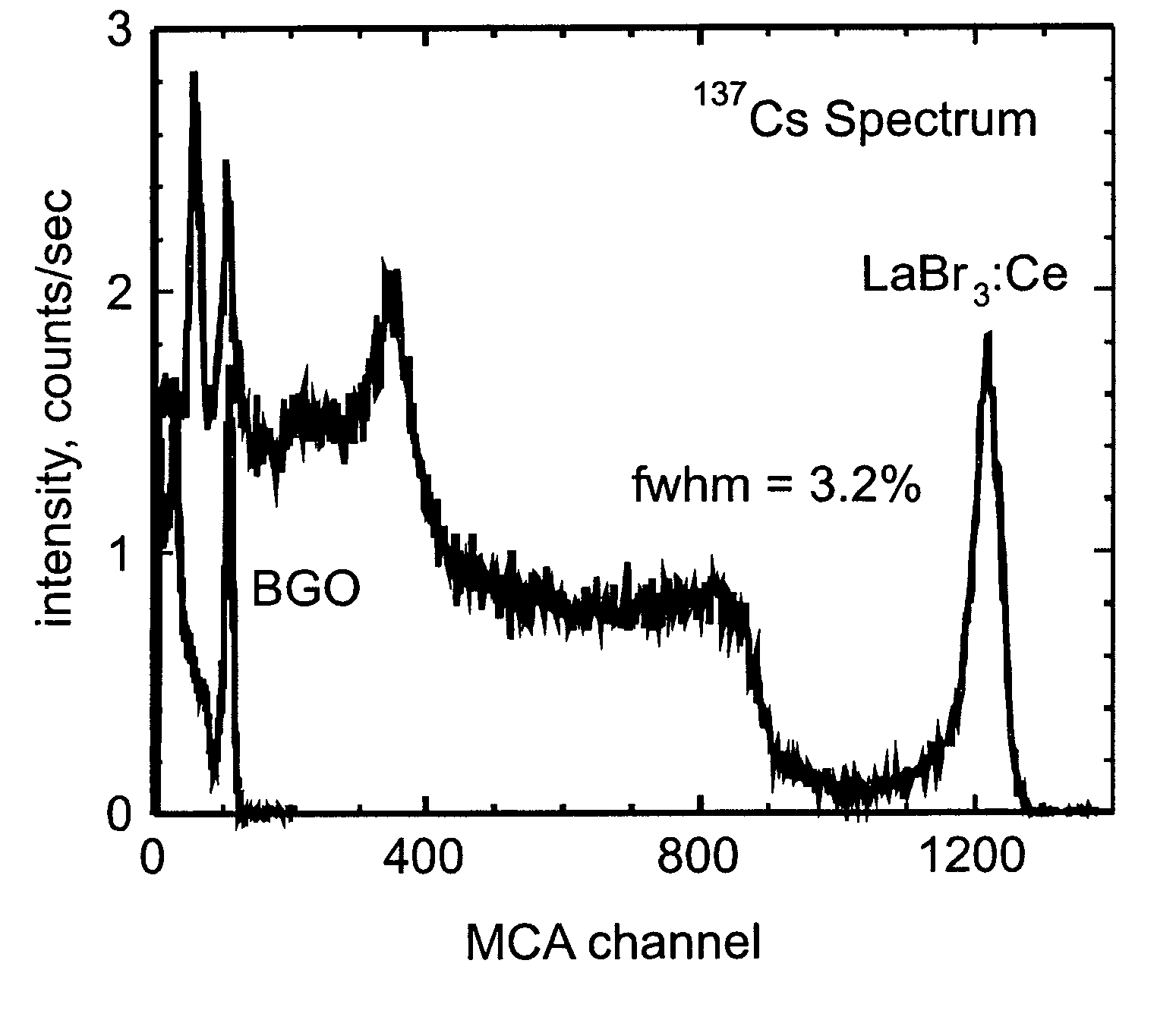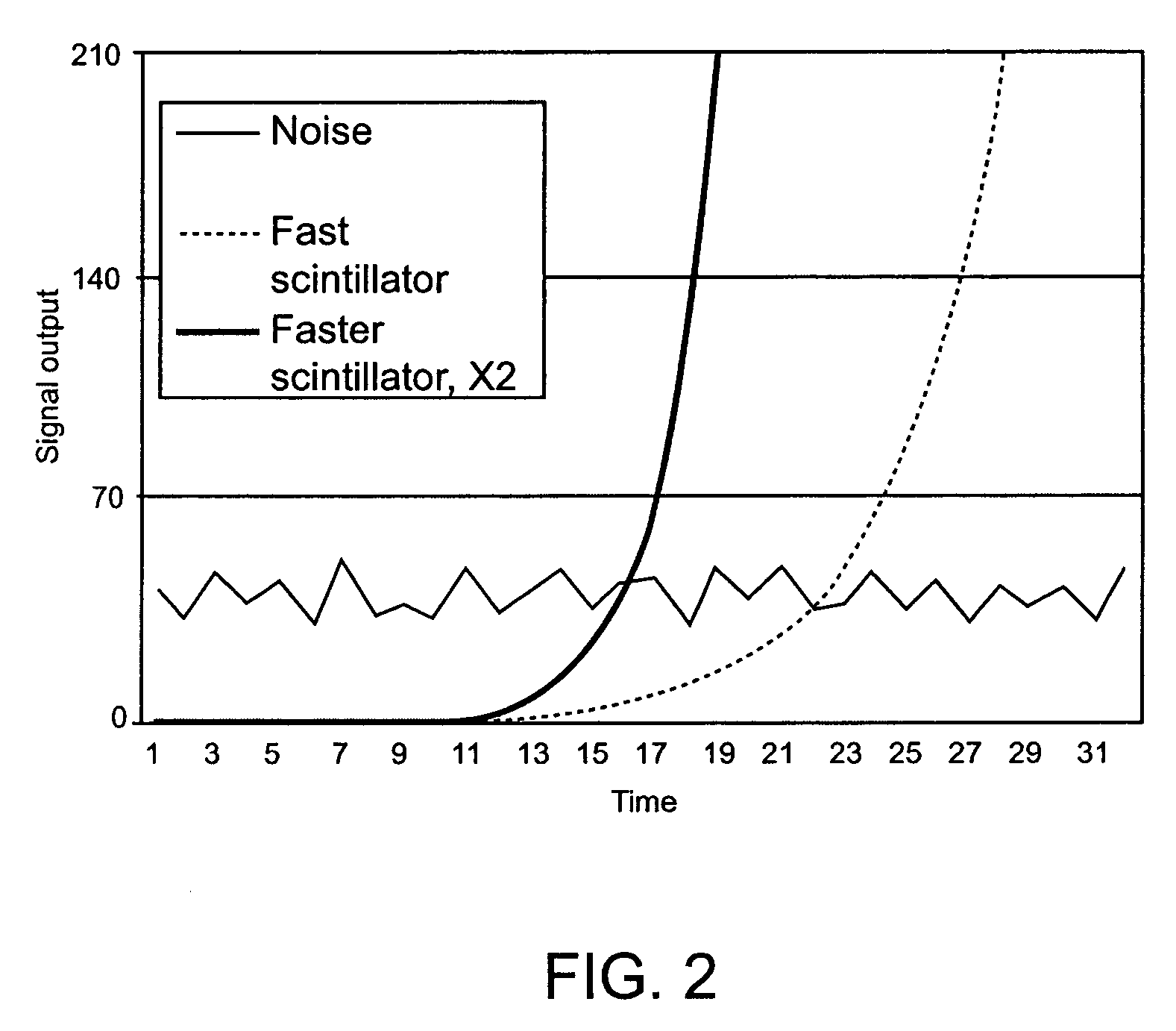Very fast doped LaBr3 scintillators and time-of-flight PET
a labr3 and time-of-flight technology, applied in the field of scintillators, can solve the problems of increased process noise, increased time resolution, and increased noise, and achieve high detection efficiency, high density and atomic number, and high light output
- Summary
- Abstract
- Description
- Claims
- Application Information
AI Technical Summary
Benefits of technology
Problems solved by technology
Method used
Image
Examples
example 1
LaBr3 Crystals, Bridgman Method
[0084]In making crystals, ultra-dry forms of LaBr3 and CeBr3 were used with 99.99% purity. A two zone Bridgman furnace was used with temperature in the hotter zone above the melting point LaBr3 (783° C.) and that of the cooler zone below the melting point. The amount of CeBr3 in the feed material was adjusted to produce LaBr3 samples with varying Ce3+ concentration. Most growth runs were performed with 0.5% cerium concentration, although some runs were also performed with other Ce3+ concentrations (e.g., 0.2%, 0.5%, 1.3%, 5%, 10%, 20% and 30%). LaBr3 crystals with a size of up to ˜2.3 cm3 were grown. These crystals were cut from the solid ingots and polished using non-aqueous slurries (due to hygroscopic nature of LaBr3) prepared by mixing mineral oil with Al2O3 grit. The crystals were then packaged to prevent long exposure to moisture. This involved encapsulating the crystal in an epoxy (e.g., Epoxy STYCAST #1266 Value23LV Titanium Oxide and EPO-TEK 3...
example 2
LaBr3:Ce, Scintillation Properties
[0085]Characterization of the scintillation properties of LaBr3 crystals grown by the Bridgman process involved measurement of the light output, the emission spectrum, and the fluorescent decay time of the crystals. Variation of these scintillation properties with Ce3+ concentration was analyzed. Energy and timing resolution of LaBr3:Ce crystals were also measured.
Light Output and Energy Resolution
[0086]The light output of LaBr3:Ce crystals was measured by comparing their response and the response of a calibrated BGO scintillator to the same isotope (662 keV γ-rays, 137Cs source, see FIG. 9). These measurements involved optical coupling of a LaBr3:Ce sample to a photomultiplier tube (with multi-alkali S-20 photocathode), irradiating the scintillator with 662 keV photons and recording the resulting pulse height spectrum. In order to maximize light collection, LaBr3:Ce crystals were wrapped in reflective, white Teflon tape on all faces (except the one...
PUM
| Property | Measurement | Unit |
|---|---|---|
| rise time | aaaaa | aaaaa |
| rise time | aaaaa | aaaaa |
| time resolution | aaaaa | aaaaa |
Abstract
Description
Claims
Application Information
 Login to View More
Login to View More - R&D
- Intellectual Property
- Life Sciences
- Materials
- Tech Scout
- Unparalleled Data Quality
- Higher Quality Content
- 60% Fewer Hallucinations
Browse by: Latest US Patents, China's latest patents, Technical Efficacy Thesaurus, Application Domain, Technology Topic, Popular Technical Reports.
© 2025 PatSnap. All rights reserved.Legal|Privacy policy|Modern Slavery Act Transparency Statement|Sitemap|About US| Contact US: help@patsnap.com



